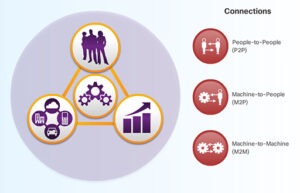How to Understand Testing in Zillexit Software
Testing is a crucial aspect of software development, ensuring that the product is reliable, secure, and user-friendly. In this article, we will delve into the specifics of testing in Zillexit software. We will cover what testing entails, why it’s essential, the different types of testing, and how to implement these tests effectively.
What is Zillexit Software?
Zillexit software is a comprehensive solution designed to streamline business processes and enhance productivity. It encompasses various modules that cater to different business needs, such as customer relationship management (CRM), inventory management, and financial tracking. With its robust features, Zillexit aims to provide a seamless user experience.
Why is Testing Important in Zillexit Software?
Testing in Zillexit software is essential for several reasons:
- Quality Assurance: Ensures the software functions correctly and meets user expectations.
- Security: Identifies vulnerabilities that could be exploited by malicious entities.
- Performance: Verifies that the software can handle expected load and performance requirements.
- User Experience: Ensures the software is user-friendly and intuitive.
Types of Testing in Zillexit Software
Unit Testing
Unit testing involves testing individual components or modules of the software to ensure they function correctly. This is usually done by developers during the coding phase.
- Purpose: To validate the functionality of specific sections of the code.
- Tools: JUnit, NUnit, PHPUnit.
Integration Testing
Integration testing checks the interactions between different modules of the software. It ensures that these modules work together as expected.
- Purpose: To verify the integration points between different modules.
- Tools: Selenium, Postman.
System Testing
System testing involves testing the complete and integrated software system to evaluate its compliance with the specified requirements.
- Purpose: To validate the end-to-end system specifications.
- Tools: QTP, LoadRunner.
Acceptance Testing
Acceptance testing is performed to determine whether the software meets the business requirements and is ready for deployment.
- Purpose: To ensure the software is ready for production.
- Types: Alpha testing, Beta testing.
Performance Testing
Performance testing checks how the software performs under various conditions, such as different load levels.
- Purpose: To identify performance bottlenecks.
- Tools: JMeter, LoadRunner.
Security Testing
Security testing aims to identify vulnerabilities and ensure that the software is secure from potential threats.
- Purpose: To protect the software from security breaches.
- Tools: OWASP ZAP, Burp Suite.
How to Implement Testing in Zillexit Software
Define Testing Objectives
Before starting the testing process, clearly define what you aim to achieve with the tests. This includes identifying the critical functionalities that need to be tested, the expected outcomes, and the acceptable criteria for passing the tests. You can also read How StockX Sneaker Net Works: A Comprehensive Guide
Develop a Test Plan
A test plan outlines the strategy and approach for testing. It includes the scope of testing, the resources required, the testing schedule, and the types of tests to be performed.
Design Test Cases
Test cases are specific conditions under which the functionality of the software is verified. Each test case should include:
- Test ID: A unique identifier for the test case.
- Description: A brief description of what the test case will verify.
- Preconditions: Any conditions that need to be met before executing the test.
- Steps to Execute: Detailed steps to perform the test.
- Expected Results: The expected outcome of the test.
Set Up the Testing Environment
The testing environment should closely resemble the production environment to ensure that the test results are accurate. This includes setting up the necessary hardware, software, and network configurations.
Execute Tests
Execute the test cases as per the test plan. Document any deviations from the expected results and report them as bugs.
Report and Track Defects
Use a defect tracking tool to log and track defects. Each defect report should include:
- Defect ID: A unique identifier for the defect.
- Description: A brief description of the defect.
- Severity: The impact of the defect on the software.
- Steps to Reproduce: Detailed steps to reproduce the defect.
- Expected and Actual Results: A comparison of what was expected versus what actually happened.
Retest and Regression Testing
Once the defects are fixed, retest the software to ensure the defects are resolved. Perform regression testing to ensure that the fixes have not introduced new defects.
Review and Analyze
After completing the testing process, review the results and analyze the overall quality of the software. Identify any areas for improvement and update the testing strategy accordingly.
Best Practices for Testing in Zillexit Software
- Automate Where Possible: Automation can save time and reduce human error.
- Prioritize Testing: Focus on critical functionalities that have the highest impact on the user experience.
- Continuous Testing: Integrate testing into the development process to identify issues early.
- Collaboration: Encourage collaboration between developers, testers, and business stakeholders.
- Documentation: Maintain detailed documentation of test cases, test results, and defect reports.
Conclusion
Testing in Zillexit software is a comprehensive process that ensures the product meets quality standards and user expectations. By understanding the different types of testing and following a structured approach, you can effectively implement a robust testing strategy. This will not only enhance the software’s reliability and performance but also provide a secure and user-friendly experience for your customers.














Post Comment